Costs Lawyers, Technology and Regulation
Technology and AI are key strands of our wider work looking at how regulation of Costs Lawyers should evolve into the future. We want to ensure that Costs Lawyers have a robust and clear framework for using technology in their work that does not create inadvertent barriers, and to raise awareness of the regulatory risks of using technology.
Our 2022 Regulators Pioneer Fund project looked at how Costs Lawyers could reduce the cost of legal services. That report found that 60% of respondents were using costs-specific software, 25% were using firm case management technology, 13% were using technology in relation to automation of the courts, and 2% were using AI-driven case outcome prediction software.
Technology is an area of increasing importance to the regulated costs profession and the wider legal sector. Our 2024 Annual Risk Outlook identified several trends relating to the use of technology that are likely to have an impact on Costs Lawyers. The LSB published new guidance on promoting technology and innovation in April 2024, and the CLSB policy statement on good consumer outcomes identified innovation as one of seven key categories of consumer outcomes that are important to us.
Given the growing use of different kinds of technology in the regulated costs law profession, we commissioned Hook Tanganza to carry out research to understand:
- What, if any, changes there have been in how Costs Lawyers are using technology and AI since the RPF report.
- New opportunities that may have emerged since the RPF report – or which may emerge in the future for regulated Costs Lawyers – related to technology and AI.
- Emerging risks from technology and AI facing Costs Lawyers.
- Barriers to Costs Lawyers making greater use of technology and AI.
- Any differences in how different parts of the sector are using technology and AI compared to regulated Costs Lawyers.
- Anything additional that the CLSB could do in this area – for example, any gaps in our regulatory framework or potential barriers that we need to address.
Final report
Key findings
Some key findings from the report include:
- Costs Lawyers are broadly optimistic about the potential impact of technology on their work.
- Use of software such as CostsMaster, Proclaim and other case management software is commonplace, and there is potential scope for AI to play a bigger role in automating routine tasks, eliminating manual data entry, speeding up legal research and providing predictive insights.
- Barriers to greater adoption and dissemination of technology include concerns over regulatory compliance, the cost of technology investment, and making the business case for technology investment in the costs sector.
- The availability of appropriate tools is a barrier to greater use of technology. Training on technology issues was also identified as a high priority by respondents.
The report makes 15 recommendations, and identifies 8 priority actions for the CLSB to help Costs Lawyers increase their take-up of AI and other new technologies.
Next steps
We are carefully considering the report’s findings and how best to take the recommendations forward, including the development of new guidance in this fast-moving area.
